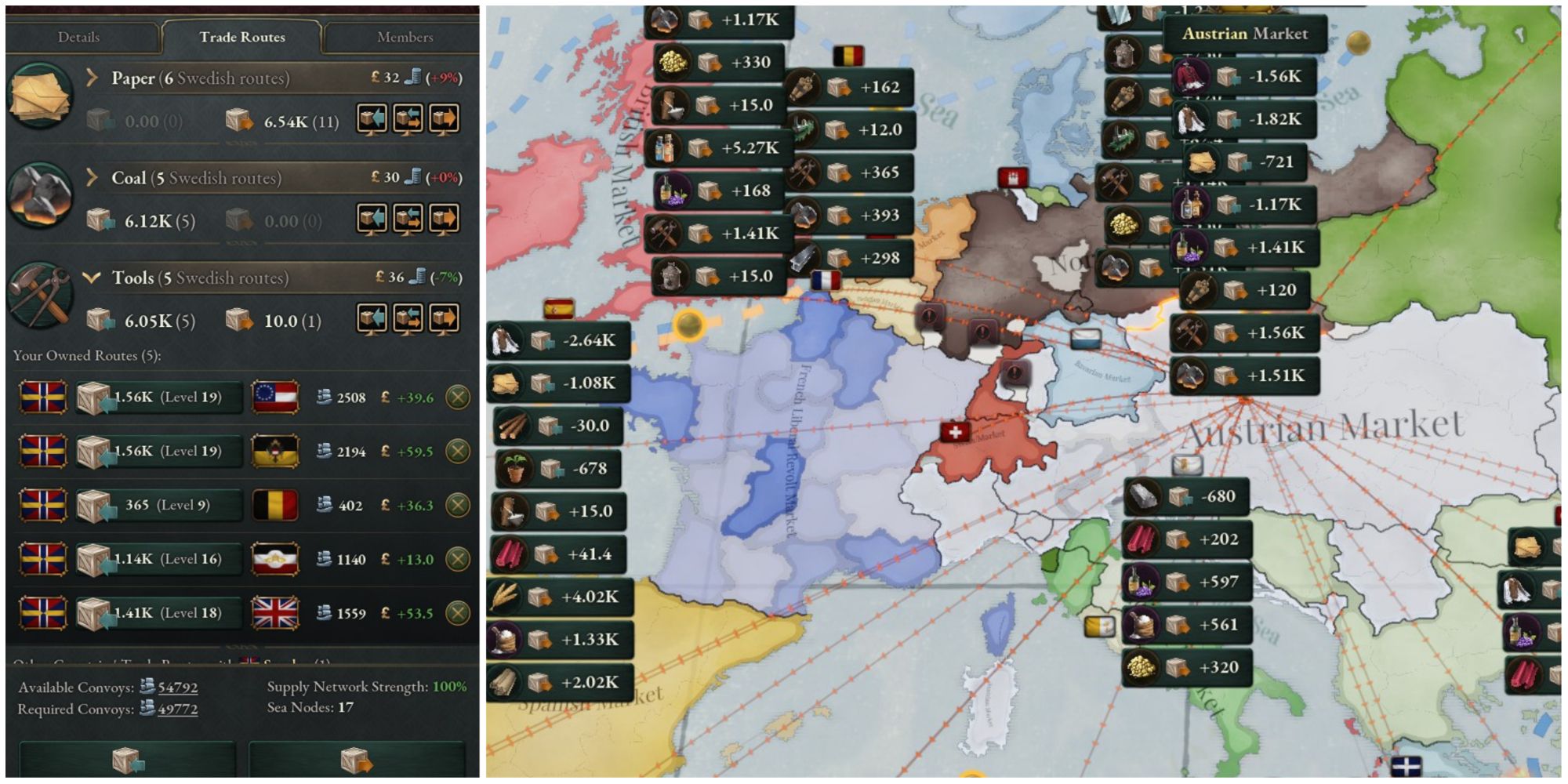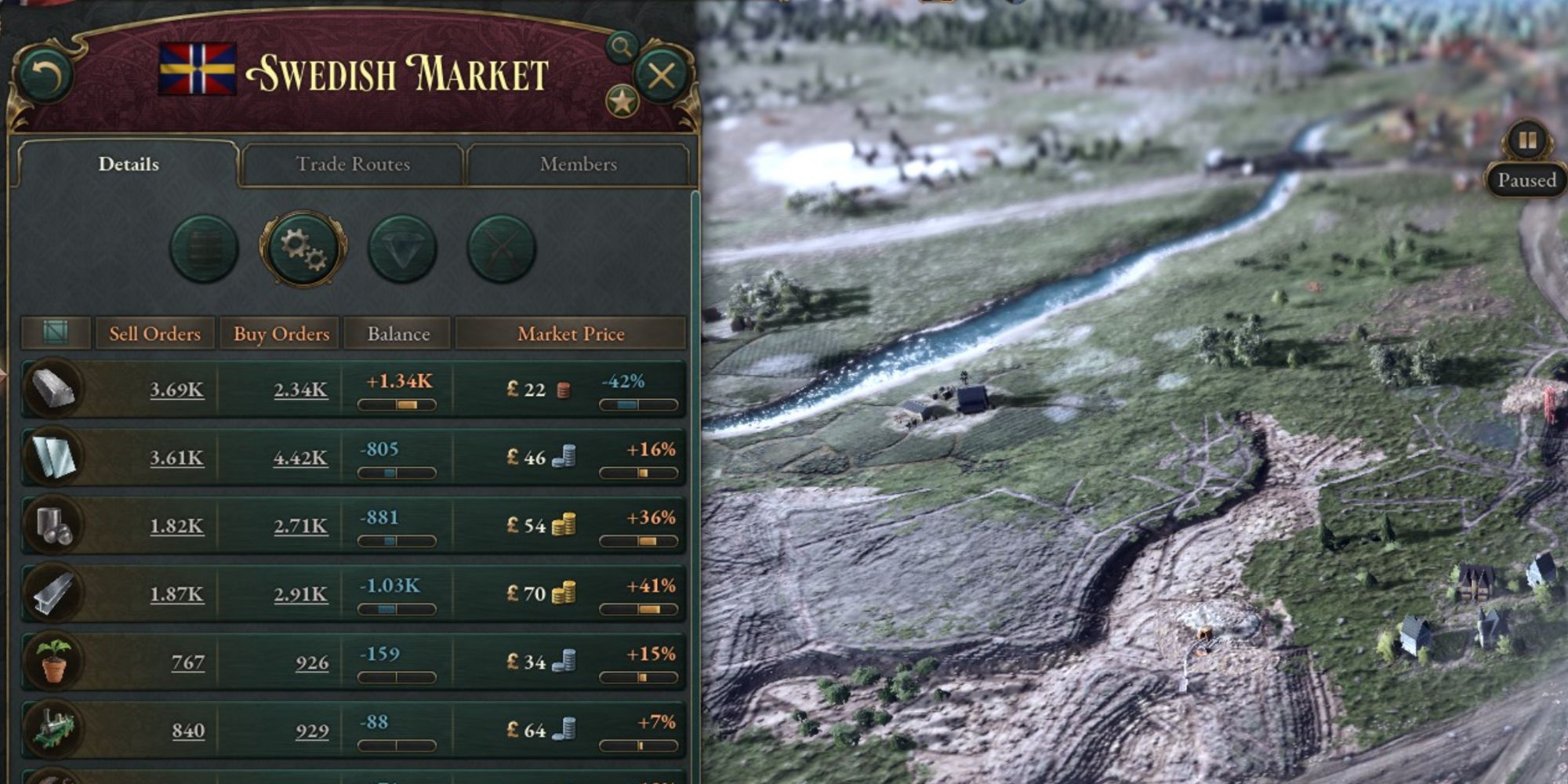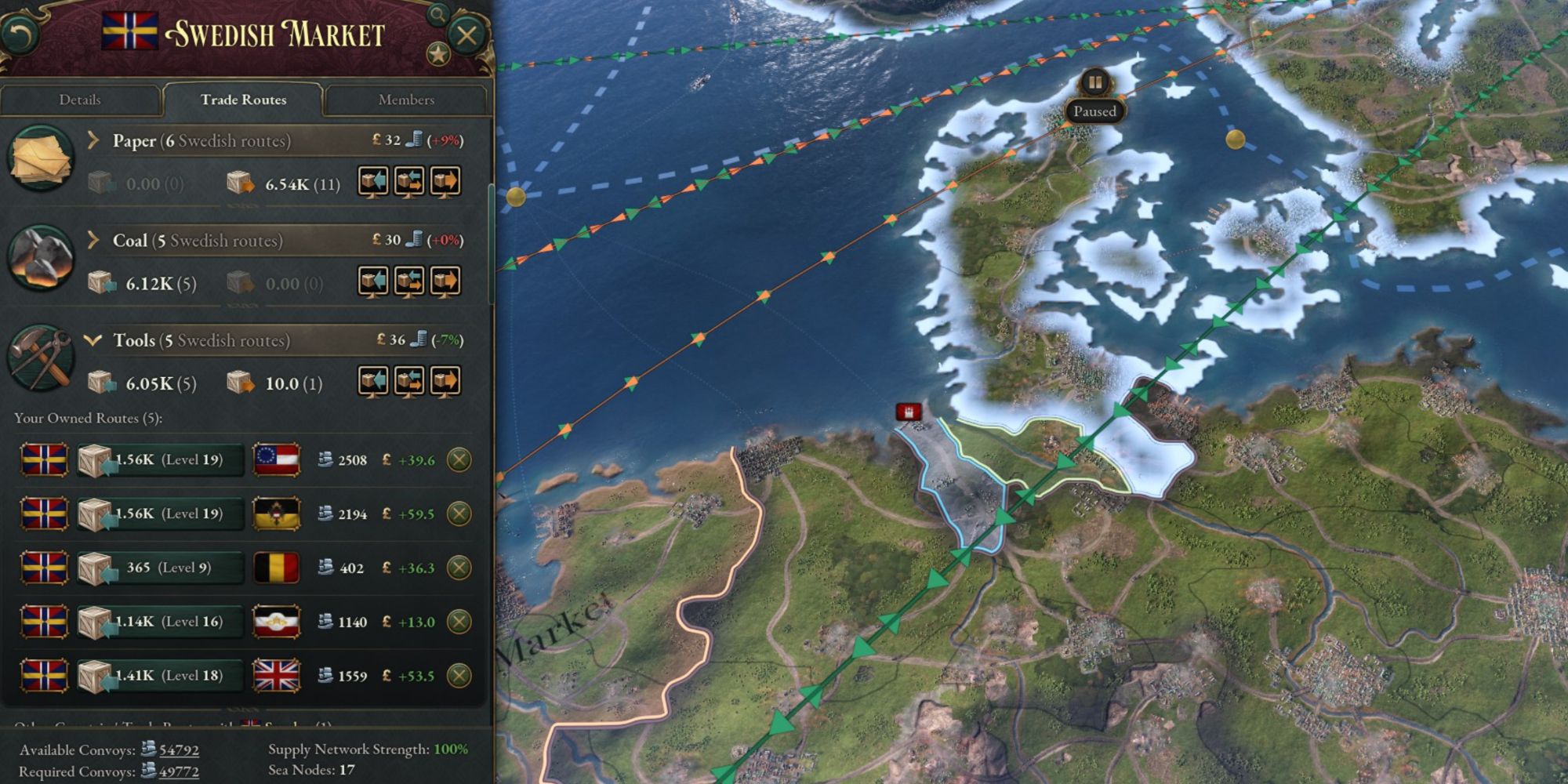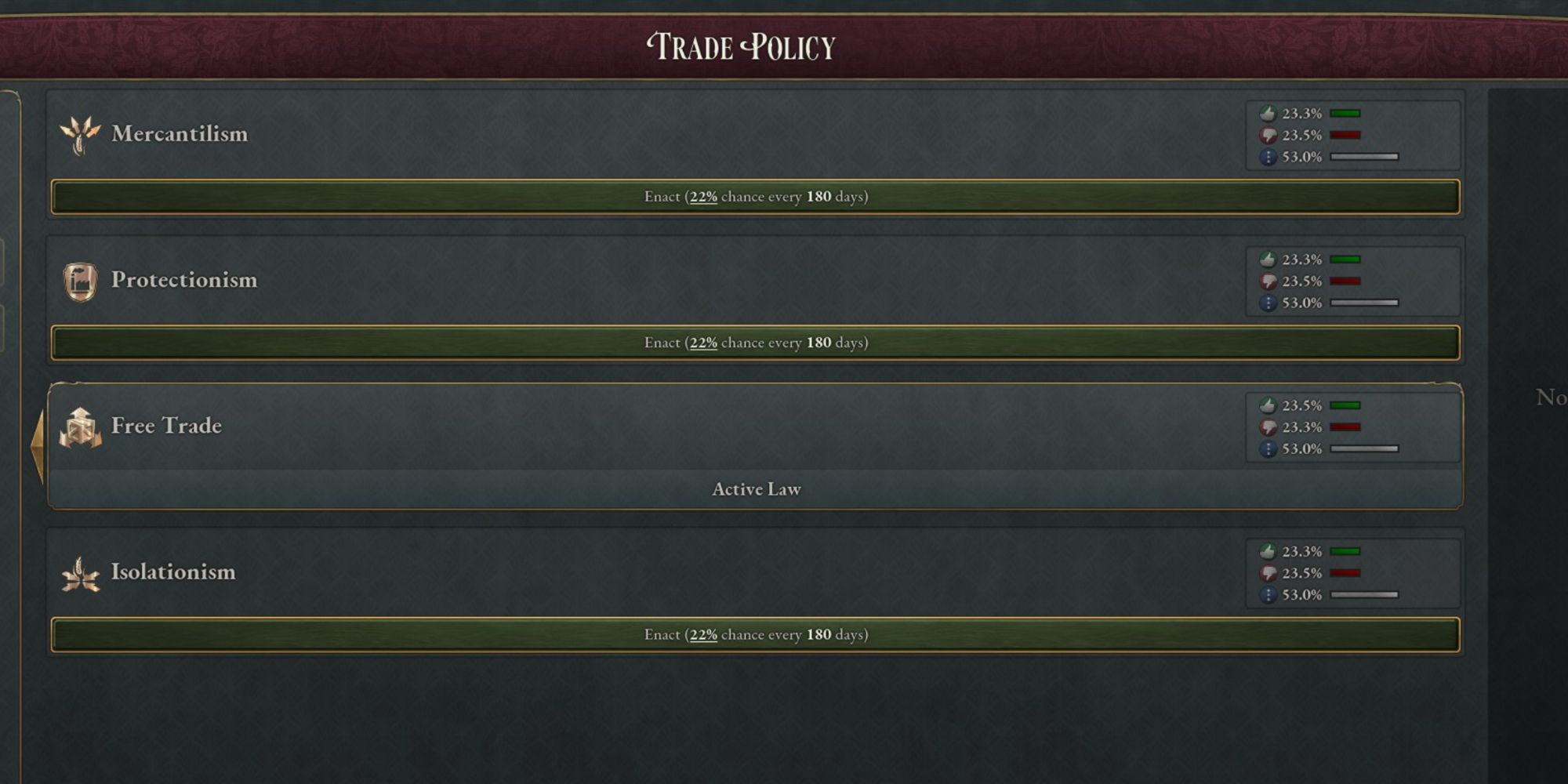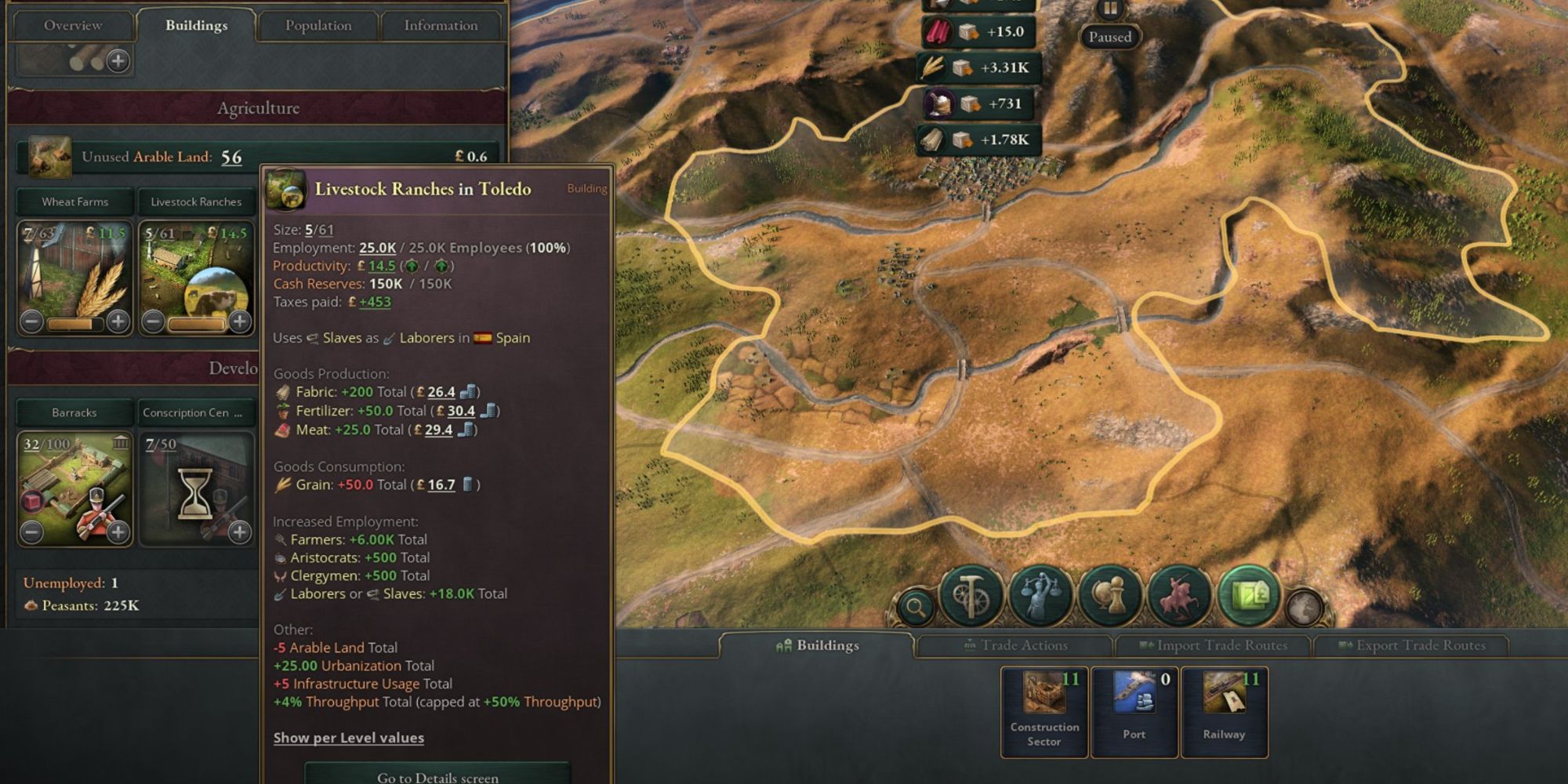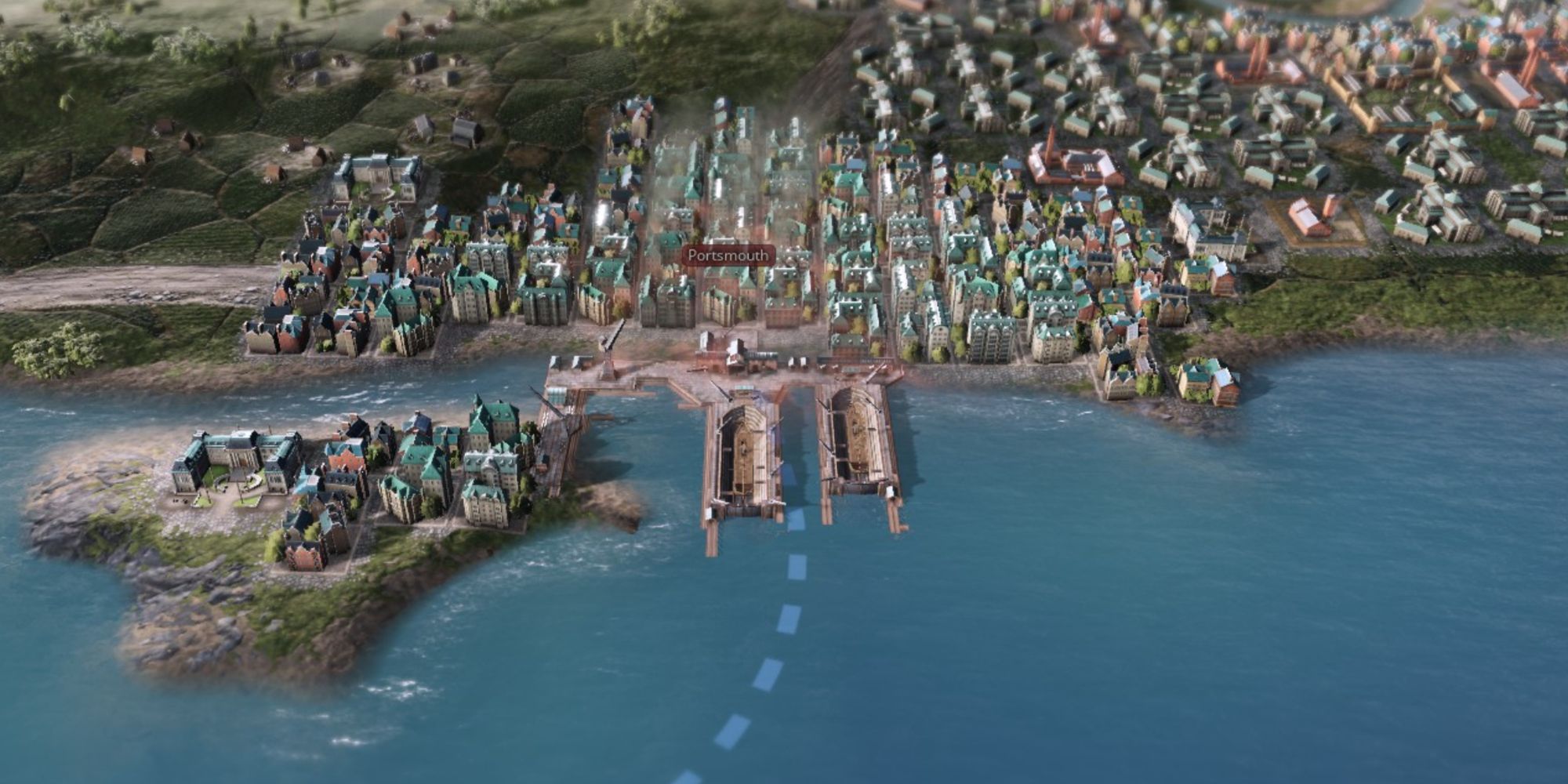Quick Links
Unless you want to attempt a totally isolationist playthrough (which is possible, by the way!) of Victoria 3, you're going to have to learn how to deal with your national and international markets. Paradox Games are well-known for how complex their trade mechanics can be, but taking the time to delve into the system and learn how to use each moving part and turn them to your advantage is well-worth the effort.
With a bit of effort, you can dominate the international market, raise your Trade Centers to unfathomable heights, and command an army of Convoys that stretch around the world, importing and exporting everything from simple Grain to the finest of Fine Arts.
National Markets
In Victoria 3, every country has a national market unless it is the subject of another country, in which case it shares a national market with its overlord and any other subjects they may have. In a national market, Goods are attributed prices based on their total Buy Orders and Sell Orders, and this is one of the most important aspects of the game's economic simulation.
There are four different types of Goods in the game, but Victoria 3 treats them all in rather the same manner. They all have a base price, and their local price - that is, the price that your Pops will have to buy them at - is affected by the balance of Buy and Sell Orders.
In the Market menu, on the Members tab, you'll find a list of every state that takes part in the same national market as you. Alongside these, you'll find each state's level of market access - this is how well their infrastructure supports their production internally and externally. If a state has less than 100 percent market access, it'll be worse off when trying to purchase and sell Goods.
Imports And Exports
On the Trade Routes section of the menu, you can see an overview of all your current and potential trade routes - both exports and imports. For each Good, you can see a list of the routes you might want to open up, with details on how many units of the item you can expect to trade, how much trade revenue there's likely to be for the Trace Centers involved, and how the national market prices will be affected.
You can only trade with nations who are in the strategic regions that you have a declared interest in. It's important to note that you cannot declare an interest and then immediately trade with the nations there - it must be a sustained interest.
Tariffs And Market Goods Policies
Tariffs are a tax on trade, affecting both imports and exports. When a Good is traded, it is expected that the revenue (or loss) is goes to the Trade Center building - the tariffs are deducted from this, going straight into the treasury. The amount of money brought in by a tariff is based on the tariff rate and the base price of the Good being traded, and tariff rate is based on two things:
- Trade Policy Law
- Market Goods Policy
Every nation has one of four different Trade Policy Laws, with two of them enabling the tariff system. If a nation has enacted either the Free Trade or the Isolationism Trade Policies, they do not have tariffs and therefore cannot set a Market Goods Policy for any Good.
When tariffs are in play, each Good being traded has a Market Goods Policy. By default, they are all set to No Priority, which gives a balanced leaning to imports and exports. There are two other settings, however - Protect Domestic Supply eliminates import tariffs to encourage more trade at the expense of your treasury, while Encourage Exports does the opposite, letting other countries buy up your Goods without having to pay tariffs.
Higher tariffs mean that your Trade Centers will be less likely to develop a trade route, as they will gain fewer bonuses to their wages and the Trade Center's revenue.
The table below details exactly how these Trade Policy Laws affect the Market Goods Policies.
|
Trade Policy Law |
Effect on No Priority |
Effect on Protect Domestic Supply |
Effect on Encourage Exports |
|---|---|---|---|
|
Protectionism |
+10% tariffs on imports +10% tariffs on exports |
+0% tariffs on imports +20% tariffs on exports |
+20% tariffs on imports +0% tariffs on exports |
|
Mercantilism |
+15% tariffs on imports +5% tariffs on exports |
+0% tariffs on imports +10% tariffs on exports |
+30% tariffs on imports +0% tariffs on exports |
The Free Trade Policy Law eliminates tariffs altogether. The Isolationism Trade Policy Law eliminates trade altogether.
Making trade decisions that encourage imports is good for an economy that's very heavy on production. This means the Protect Domestic Supply option is great for Goods that are used to make more expensive things, usually Luxury Goods, and good for getting more treasury out of export trade routes. The opposite is true for Encourage Exports - you can use this policy to offload a surplus in production to increase price a little, or gain more money from vital import routes.
Importing To Supplement Production And Needs
One aspect of trade that may be overlooked is how it can be used to great effect - and is sometimes entirely necessary - to supplement production. If you find yourself low on a resource that you require to make something, importing it is sometimes the way to go. If you're lucky, you'll be able to take advantage of cheap, prosperous trade routes.
When choosing a trade route to establish, the important numbers to look out for are the Amount and the Productivity. Amount is simply the number of units you'd get from the deal - you want this to supply your production needs, ideally. Productivity is how profitable the route will be, with the number being the wage increase that your Trade Center workers will receive.
You may find yourself in a situation where you need to import Goods just to supply production or your Pops' needs at all - this will come up from time to time with the rarer late-game Goods, such as Oil, Rubber, and Opium. The predictions made by the trade route menu here are pretty robust, so you can tell even at a glance if importing your entire supply of a Good will be profitable in the long run - you'll want to see the price of the Good in your national market decreasing in the tooltip when you hover over the prospective trade route.
Convoys
Unless you are a landlocked nation, you'll have to deal with Convoys sooner or later. Convoys are a resource produced by Ports. This resource represents your nation's ability to supply the trade routes that you have established and your ability to grow those trade routes into larger routes, sustaining more goods in the process.
If you are a trade-heavy nation, you will need a lot of Convoys, which involves building more, larger Ports and upgrading their production methods with bigger, more expensive ships. One problem you might run into at various stages of the game is that you run out of states in which to build Ports, which can be very annoying.
There are a few technologies to research that increase the maximum level of your Ports - these will be very important to get if trade is central to your economy. Get them as soon as you can.
Upgrading the production method of your Ports as early as you can feasibly do so is important, but be wary of the Goods that this consumes.

